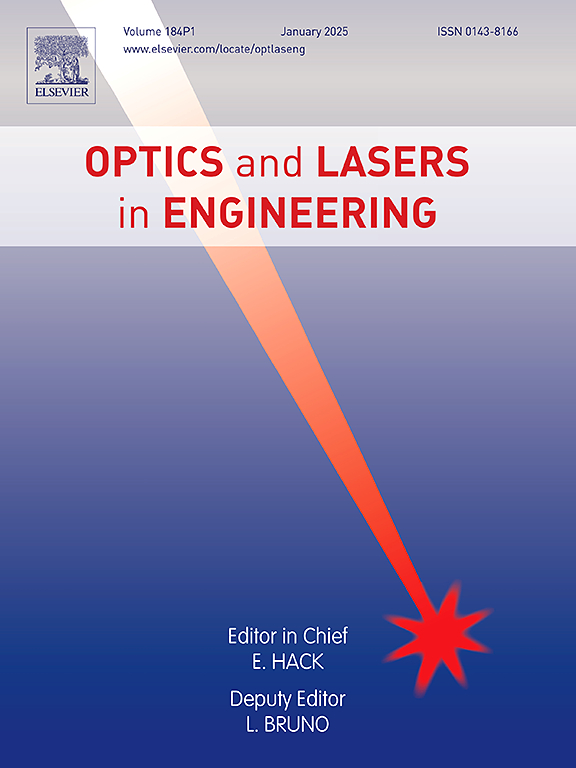基于连接域分析的多焦全息图自动聚焦方法
IF 3.7
2区 工程技术
Q2 OPTICS
引用次数: 0
摘要
全息成像技术因其景深大而被广泛用于浮游生物成像。自动对焦是全息成像的关键步骤,通过定位评价函数曲线的极值来确定最佳焦平面。然而,这些方法大多在单焦点全息图上执行自动对焦。要将这些方法应用于多焦点全息图,必须对全息图进行物体分割。在对小物体和大景深的全息图进行聚焦时,很难取得良好的效果。因此,我们提出了一种基于连通域分析(CDA)的多焦点自动对焦方法,它可以同时对不同焦距的多个物体进行对焦,而无需进行图像分割。每个物体都会生成一条对焦评估曲线,从而实现高对焦精度。我们建立了一个景深为 30 毫米的在线全息光学系统,并记录了 Nauplius、Cladocera、Rotifera、Copepods、Noctiluca scintillans 和真实海水样本的全息图像。我们将 CDA 算法应用于六种样本的全息图像,证明了该算法对不同目标类型的稳健性及其在聚焦多焦点图像方面的有效性。本文章由计算机程序翻译,如有差异,请以英文原文为准。
Autofocusing method for multifocal holograms based on connected domain analysis
Holography is widely used for imaging plankton because of its large depth of field. Autofocusing is a critical step in holographic imaging, where the optimal focal plane is determined by locating the extremum of the evaluation function curve. However, most of these methods perform auto-focusing on single focus holograms. To apply these methods to multi-focus holograms, the hologram must be subjected to object segmentation. It is difficult to achieve good results when focusing on holograms with small objects and large depth of field. Therefore, we propose a multi-focus autofocus method based on connected domain analysis (CDA), which allows focusing on multiple objects at different focal lengths simultaneously without image segmentation. Each object generates a focus evaluation curve, resulting in high focusing accuracy. We set up an in-line holographic optical system with a 30 mm depth of field and recorded holograms of Nauplius, Cladocera, Rotifera, Copepods, Noctiluca scintillans and real seawater samples. We demonstrated the robustness of the CDA algorithm for different target types and its effectiveness in focusing multi-focus images by applying it to holograms of six types of samples.
求助全文
通过发布文献求助,成功后即可免费获取论文全文。
去求助
来源期刊

Optics and Lasers in Engineering
工程技术-光学
CiteScore
8.90
自引率
8.70%
发文量
384
审稿时长
42 days
期刊介绍:
Optics and Lasers in Engineering aims at providing an international forum for the interchange of information on the development of optical techniques and laser technology in engineering. Emphasis is placed on contributions targeted at the practical use of methods and devices, the development and enhancement of solutions and new theoretical concepts for experimental methods.
Optics and Lasers in Engineering reflects the main areas in which optical methods are being used and developed for an engineering environment. Manuscripts should offer clear evidence of novelty and significance. Papers focusing on parameter optimization or computational issues are not suitable. Similarly, papers focussed on an application rather than the optical method fall outside the journal''s scope. The scope of the journal is defined to include the following:
-Optical Metrology-
Optical Methods for 3D visualization and virtual engineering-
Optical Techniques for Microsystems-
Imaging, Microscopy and Adaptive Optics-
Computational Imaging-
Laser methods in manufacturing-
Integrated optical and photonic sensors-
Optics and Photonics in Life Science-
Hyperspectral and spectroscopic methods-
Infrared and Terahertz techniques
 求助内容:
求助内容: 应助结果提醒方式:
应助结果提醒方式:


